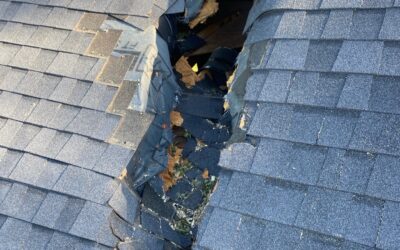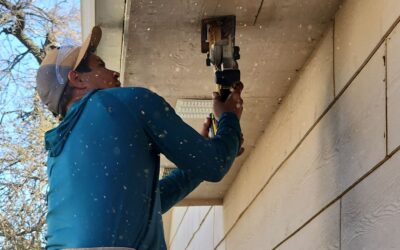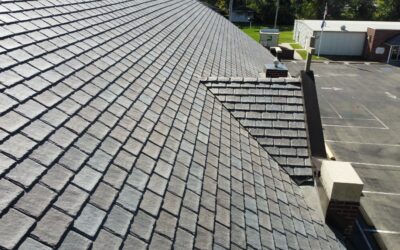When it’s time for a roof replacement, one of the biggest decisions homeowners face is selecting the right roofing material. Asphalt shingles are the most commonly used roofing material across the country, and for good reason. They’re durable, cost-effective, and come in a variety of styles. However, with multiple options available, it’s easy to feel overwhelmed.
Two of the most popular types of asphalt shingles are 3-tab and architectural shingles. While both are solid choices, each offers unique benefits depending on your home’s needs, style preferences, and budget.
In this article, we’ll break down the key differences between 3-tab and architectural shingles to help you make an informed decision and feel confident about your roof investment.
What are 3-Tab Shingles?
3-tab shingles have been a dependable roofing option for American homes since the early 1900s. Their name comes from their design, each shingle strip is divided into three equal sections, or “tabs,” which gives the appearance of three separate shingles. This design results in a neat, consistent look that remains popular, especially on older homes where their classic style continues to hold up over time.
One of the key advantages of 3-tab shingles is their affordability. They provide a budget-friendly roofing solution while still delivering reliable, long-lasting performance. When installed correctly and maintained over time, 3-tab shingles can offer a lifespan of 15 to 30 years. Their straightforward design doesn’t sacrifice functionality; they still offer dependable protection against everyday weather elements.
Environmentally conscious homeowners will also appreciate that 3-tab shingles are 100% recyclable. Leading manufacturers like GAF continue to produce high-quality options for those who favor their classic look and proven performance.
That said, the affordability of 3-tab shingles does come with some trade-offs. They typically have a shorter lifespan than more advanced shingle types and are more susceptible to damage from hail, high winds, and other severe weather conditions due to their lighter construction.
3-tab shingles are a great choice for budget-conscious homeowners or for use on garages, rental properties, or outbuildings. However, for those looking to increase long-term durability and home equity, architectural shingles are often the preferred option.

Pictured above is a 3-tab shingle roof, known for its clean, symmetrical appearance. Its classic design offers timeless curb appeal and complements a wide variety of home styles—especially common on older homes where durability and simplicity meet.
What are Architectual Shingles?
Architectural shingles, also known as dimensional or laminate shingles, are a premium type of asphalt roofing designed to offer both durability and curb appeal. Unlike 3-tab shingles, architectural shingles are made with multiple layers of asphalt fused together, creating a thicker, more dimensional look that can mimic the appearance of wood shake or slate.
Their added weight and construction make them more resistant to harsh weather conditions like wind and hail, with many products rated for winds up to 130 mph. Architectural shingles also tend to last longer, typically 25 to 50 years, and often come with enhanced warranties. With a wide range of styles and colors available, they’re a popular choice for homeowners looking to boost their home’s appearance, value, and long-term protection. Architectural shingles also add more curb appeal to your home, as they come in many different colors and styles.
Shingles are rated in different classes based on their resistance to weather and impact. The highest rating, Class 4, offers superior protection against harsh conditions like hail and high winds. These ratings range from Class 1 to Class 4, with Class 1 providing the least amount of protection.
While architectural shingles come at a higher price point compared to 3-tab shingles, that investment brings added benefits, a longer lifespan and enhanced durability. Many homeowners choose architectural shingles because they offer excellent long-term value and reliable performance. However, it’s important to note that due to their heavier weight, architectural shingles may not be suitable for some older homes with structural limitations.

Pictured above is an architectural-style shingle, designed to mimic the look of natural wood shake. These shingles offer added depth, texture, and are available in a wide range of styles and colors to complement any home’s aesthetic.
3-Tab Shingles vs. Architectural Shingles
| Feature | 3-Tab Shingles | Architectural Shingles |
| Lifespan | 15-30 Years | 25-30 Years |
| Cost | Lower | Higher |
| Appearance | Flat | Textured/Dimensional |
| Durability | Moderate | High |

Figure 1:
This is another example of a 3-tab shingle roof. These shingles are available in a variety of colors, as shown here, allowing homeowners to match their roof to their home’s style.
Figure 2:
Shown here is an architectural shingle roof. Its multi-layered design adds depth and durability, resulting in a longer lifespan and a more detailed installation process.

Which One Should I Chose?
There’s no one-size-fits-all answer when it comes to choosing the right roofing material, it ultimately depends on several factors, including your budget, your roof’s structure, and your home’s overall style. While 3-tab shingles are the most affordable option upfront, it’s important to consider potential long-term costs. These shingles may require more frequent repairs and maintenance over the years.
Although all roofs are susceptible to issues over time, investing in architectural shingles can often mean fewer repairs and better long-term value. Both options will protect your home, but 3-tab shingles typically come with more upkeep.
If you’re unsure which option is best for your home, our Rhoden Roofing experts are here to help. We’re happy to answer any questions and guide you toward the best roofing solution for your needs and budget.




